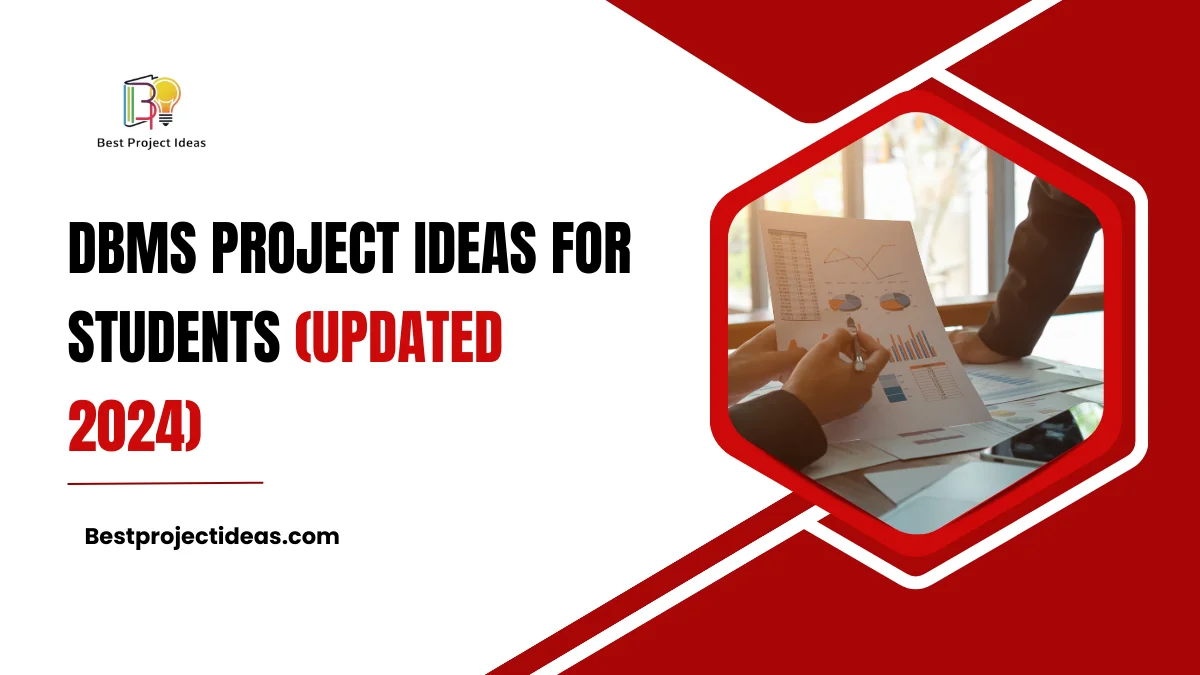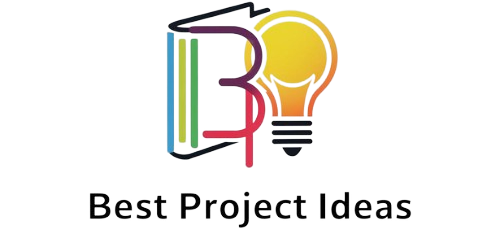
Dive into the world of databases with exciting DBMS project ideas! These projects let you explore how to store, manage, and use data in interesting ways. Whether you’re new to databases or have some experience, there’s something for everyone.
DBMS projects can help you learn important skills that companies look for in job candidates.
You might create a system to track your favorite books, manage a small business, or even build a simple social media app. The best part? You’ll learn a lot while having fun!
As you work on these projects, you’ll get better at solving problems and thinking creatively. So, get ready to roll up your sleeves and start bringing your DBMS project ideas to life!
Must Read: 89+ Most Trending STEAM Project Ideas This Year
How To Present A Database Project?
To present a database project effectively, consider the following steps:
- Introduce the project:
- Briefly explain the purpose and goals of your database.
- Describe the problem it solves or the need it addresses.
- Provide an overview of the database design:
- Present the entity-relationship diagram (ERD).
- Explain the main tables and their relationships.
- Discuss key features:
- Highlight important functionalities.
- Show how the database meets its objectives.
- Show sample data and queries:
- Display some representative data in tables.
- Demonstrate a few important questions and their results.
- Explain the implementation:
- Briefly mention the technologies used (e.g., MySQL, PostgreSQL).
- Discuss any challenges faced and how they were overcome.
- Demonstrate the user interface (if applicable):
- Show how users interact with the database.
- Walk through typical use cases.
- Discuss future improvements or scalability:
- Mention any planned enhancements.
- Explain how the database can grow or adapt to changing needs.
- Conclude with a summary:
- Recap the main points.
- Emphasize how the project meets its goals.
- Be prepared for questions:
- Think about potential questions and prepare answers.
Remember to keep your presentation clear, simple, and suitable for your audience’s technical level. Visual aids like diagrams, screenshots, or live demonstrations can help people understand better.
DBMS Project Ideas With Source Code
Library Management System
Organize books, track rentals, and manage due dates. This system keeps track of all books, borrowers, and transaction histories, helping libraries run smoothly. It also sends reminders for overdue books.
Source Code: Create tables for books, borrowers, and transactions. Use SQL queries to insert, update, and fetch data.
CREATE TABLE Books (
BookID INT PRIMARY KEY,
Title VARCHAR(100),
Author VARCHAR(100),
Available BOOLEAN
);
CREATE TABLE Borrowers (
BorrowerID INT PRIMARY KEY,
Name VARCHAR(100),
MembershipDate DATE
);
CREATE TABLE Transactions (
TransactionID INT PRIMARY KEY,
BookID INT,
BorrowerID INT,
BorrowDate DATE,
ReturnDate DATE,
FOREIGN KEY (BookID) REFERENCES Books(BookID),
FOREIGN KEY (BorrowerID) REFERENCES Borrowers(BorrowerID)
);
Student Record Management
Store and update student grades and attendance. This system allows schools to handle student information, check grades, and track attendance. It helps make report cards and find students who might need extra help.
Source Code: Define tables for students, grades, and attendance records. Use SQL joins to connect data.
CREATE TABLE Students (
StudentID INT PRIMARY KEY,
Name VARCHAR(100),
Class VARCHAR(10)
);
CREATE TABLE Grades (
GradeID INT PRIMARY KEY,
StudentID INT,
Subject VARCHAR(50),
Grade CHAR(1),
FOREIGN KEY (StudentID) REFERENCES Students(StudentID)
);
CREATE TABLE Attendance (
AttendanceID INT PRIMARY KEY,
StudentID INT,
Date DATE,
Status CHAR(1),
FOREIGN KEY (StudentID) REFERENCES Students(StudentID)
);
Hotel Reservation System
Manage room bookings, check-ins, and check-outs. This system handles customer reservations, room availability, and billing, making hotel management easier. It also lets customers book rooms online.
Source Code: Create tables for rooms, customers, and reservations. Use stored procedures to manage bookings.
CREATE TABLE Rooms (
RoomID INT PRIMARY KEY,
RoomType VARCHAR(50),
Price DECIMAL(10, 2),
IsAvailable BOOLEAN
);
CREATE TABLE Customers (
CustomerID INT PRIMARY KEY,
Name VARCHAR(100),
PhoneNumber VARCHAR(15)
);
CREATE TABLE Reservations (
ReservationID INT PRIMARY KEY,
RoomID INT,
CustomerID INT,
CheckInDate DATE,
CheckOutDate DATE,
FOREIGN KEY (RoomID) REFERENCES Rooms(RoomID),
FOREIGN KEY (CustomerID) REFERENCES Customers(CustomerID)
);
Inventory Management System
Monitor stock levels and handle product orders. This system helps businesses keep track of stock, reorder items, and manage suppliers. It makes sure that there is enough stock without having too much.
Source Code: Define tables for products, suppliers, and inventory. Use triggers to automatically update inventory.
CREATE TABLE Products (
ProductID INT PRIMARY KEY,
Name VARCHAR(100),
SupplierID INT,
StockLevel INT,
ReorderLevel INT,
FOREIGN KEY (SupplierID) REFERENCES Suppliers(SupplierID)
);
CREATE TABLE Suppliers (
SupplierID INT PRIMARY KEY,
SupplierName VARCHAR(100),
ContactInfo VARCHAR(100)
);
CREATE TRIGGER ReorderTrigger
AFTER UPDATE ON Products
FOR EACH ROW
BEGIN
IF NEW.StockLevel < NEW.ReorderLevel THEN
— Trigger reorder logic
END IF;
END;
Online Food Ordering System
Track orders, manage menus, and handle customer details. This system helps restaurants manage their menus, track orders, and process payments, improving customer satisfaction and business growth.
Source Code: Create tables for menu items, customers, and orders. Use views to display active orders.
CREATE TABLE MenuItems (
ItemID INT PRIMARY KEY,
Name VARCHAR(100),
Price DECIMAL(10, 2)
);
CREATE TABLE Customers (
CustomerID INT PRIMARY KEY,
Name VARCHAR(100),
Address VARCHAR(200),
Phone VARCHAR(15)
);
CREATE TABLE Orders (
OrderID INT PRIMARY KEY,
CustomerID INT,
OrderDate DATE,
TotalAmount DECIMAL(10, 2),
FOREIGN KEY (CustomerID) REFERENCES Customers(CustomerID)
);
CREATE VIEW ActiveOrders AS
SELECT * FROM Orders WHERE OrderDate = CURDATE();
Employee Payroll Management
Calculate salaries, manage taxes, and track attendance. This system calculates employee pay, deducts taxes, and keeps attendance records, making payroll processes easier for businesses.
Source Code: Define tables for employees, salaries, and attendance. Use SQL functions to calculate payroll.
CREATE TABLE Employees (
EmployeeID INT PRIMARY KEY,
Name VARCHAR(100),
Position VARCHAR(50),
Salary DECIMAL(10, 2)
);
CREATE TABLE Attendance (
AttendanceID INT PRIMARY KEY,
EmployeeID INT,
Date DATE,
Status CHAR(1),
FOREIGN KEY (EmployeeID) REFERENCES Employees(EmployeeID)
);
CREATE FUNCTION CalculateSalary(EmployeeID INT)
RETURNS DECIMAL(10, 2)
BEGIN
DECLARE TotalSalary DECIMAL(10, 2);
SELECT SUM(Salary) INTO TotalSalary
FROM Employees
WHERE EmployeeID = EmployeeID;
RETURN TotalSalary;
END;
E-commerce Product Catalog
Organize product details, categories, and prices. This database helps online stores manage product inventories, categorize items, and show accurate prices, making shopping easy.
Source Code: Create tables for products and categories. Use foreign keys to link products to categories.
CREATE TABLE Categories (
CategoryID INT PRIMARY KEY,
CategoryName VARCHAR(100)
);
CREATE TABLE Products (
ProductID INT PRIMARY KEY,
ProductName VARCHAR(100),
CategoryID INT,
Price DECIMAL(10, 2),
FOREIGN KEY (CategoryID) REFERENCES Categories(CategoryID)
);
Hospital Patient Information System
Store patient details, medical history, and appointments. This system keeps detailed records of patients, including their medical history, medicines, and appointments, helping in effective healthcare delivery.
Source Code: Define tables for patients, medical records, and appointments. Use joins to compile patient information.
CREATE TABLE Patients (
PatientID INT PRIMARY KEY,
Name VARCHAR(100),
DateOfBirth DATE,
ContactInfo VARCHAR(100)
);
CREATE TABLE MedicalRecords (
RecordID INT PRIMARY KEY,
PatientID INT,
Diagnosis VARCHAR(200),
Treatment VARCHAR(200),
FOREIGN KEY (PatientID) REFERENCES Patients(PatientID)
);
CREATE TABLE Appointments (
AppointmentID INT PRIMARY KEY,
PatientID INT,
AppointmentDate DATE,
DoctorName VARCHAR(100),
FOREIGN KEY (PatientID) REFERENCES Patients(PatientID)
);
Vehicle Parking Management
Track available spaces, vehicle entry, and exit times. This system helps parking lot managers keep track of available spaces, record vehicle entry and exit times, and use parking spaces effectively.
Source Code: Create tables for parking slots and vehicle logs. Use triggers to update parking availability.
CREATE TABLE ParkingSlots (
SlotID INT PRIMARY KEY,
IsOccupied BOOLEAN
);
CREATE TABLE VehicleLogs (
LogID INT PRIMARY KEY,
VehicleNumber VARCHAR(20),
EntryTime DATETIME,
ExitTime DATETIME
);
CREATE TRIGGER UpdateSlotAvailability
AFTER INSERT ON VehicleLogs
FOR EACH ROW
BEGIN
UPDATE ParkingSlots SET IsOccupied = TRUE WHERE SlotID = NEW.SlotID;
END;
Cinema Ticket Booking System
Manage movie schedules, seat reservations, and payments. This system helps cinemas manage movie times, handle seat reservations, and process payments, improving service.
Source Code: Define tables for movies, seats, and reservations. Use transactions to manage booking processes.
CREATE TABLE Movies (
MovieID INT PRIMARY KEY,
Title VARCHAR(100),
ShowTime DATETIME
);
CREATE TABLE Seats (
SeatID INT PRIMARY KEY,
MovieID INT,
IsReserved BOOLEAN,
FOREIGN KEY (MovieID) REFERENCES Movies(MovieID)
);
CREATE TABLE Reservations (
ReservationID INT PRIMARY KEY,
SeatID INT,
CustomerID INT,
FOREIGN KEY (SeatID) REFERENCES Seats(SeatID)
);
School Timetable Management
Plan and schedule classes, exams, and teacher assignments. This system helps schools organize class schedules, assign teachers, and plan exams, ensuring smooth operations.
Source Code: Create tables for classes, teachers, and schedules. Use triggers to prevent scheduling conflicts.
CREATE TABLE Classes (
ClassID INT PRIMARY KEY,
ClassName VARCHAR(100)
);
CREATE TABLE Teachers (
TeacherID INT PRIMARY KEY,
Name VARCHAR(100)
);
CREATE TABLE Schedules (
ScheduleID INT PRIMARY KEY,
ClassID INT,
TeacherID INT,
DayOfWeek VARCHAR(10),
StartTime TIME,
EndTime TIME,
FOREIGN KEY (ClassID) REFERENCES Classes(ClassID),
FOREIGN KEY (TeacherID) REFERENCES Teachers(TeacherID)
);
CREATE TRIGGER AvoidConflict
BEFORE INSERT ON Schedules
FOR EACH ROW
BEGIN
DECLARE Conflicts INT;
SELECT COUNT(*) INTO Conflicts
FROM Schedules
WHERE DayOfWeek = NEW.DayOfWeek
AND StartTime = NEW.StartTime
AND EndTime = NEW.EndTime;
IF Conflicts > 0 THEN
SIGNAL SQLSTATE ‘45000’
SET MESSAGE_TEXT = ‘Schedule conflict detected’;
END IF;
END;
Event Registration System
Organize attendee information and handle event schedules. This system manages event sign-ups, stores attendee details, and handles event schedules, making event planning easier.
Source Code: Define tables for events, attendees, and registrations. Use SQL queries to generate attendance lists.
CREATE TABLE Events (
EventID INT PRIMARY KEY,
EventName VARCHAR(100),
EventDate DATE
);
CREATE TABLE Attendees (
AttendeeID INT PRIMARY KEY,
Name VARCHAR(100),
Email VARCHAR(100)
);
CREATE TABLE Registrations (
RegistrationID INT PRIMARY KEY,
EventID INT,
AttendeeID INT,
FOREIGN KEY (EventID) REFERENCES Events(EventID),
FOREIGN KEY (AttendeeID) REFERENCES Attendees(AttendeeID)
);
Gym Membership Management
Handle memberships, renewals, and payments. This system keeps track of member details, membership renewals, and payments, helping gyms manage their clients effectively.
Source Code: Create tables for members, memberships and payments. Use functions to calculate membership fees.
CREATE TABLE Members (
MemberID INT PRIMARY KEY,
Name VARCHAR(100),
JoinDate DATE
);
CREATE TABLE Memberships (
MembershipID INT PRIMARY KEY,
MemberID INT,
StartDate DATE,
EndDate DATE,
FOREIGN KEY (MemberID) REFERENCES Members(MemberID)
);
CREATE TABLE Payments (
PaymentID INT PRIMARY KEY,
MemberID INT,
Amount DECIMAL(10, 2),
PaymentDate DATE,
FOREIGN KEY (MemberID) REFERENCES Members(MemberID)
);
Real Estate Management System
Track property listings, manage client inquiries, and handle sales. This system helps real estate agencies keep track of properties, manage client information, and handle transactions.
Source Code: Define tables for properties, clients, and transactions. Use views to list available properties.
CREATE TABLE Properties (
PropertyID INT PRIMARY KEY,
Address VARCHAR(200),
Price DECIMAL(10, 2),
IsAvailable BOOLEAN
);
CREATE TABLE Clients (
ClientID INT PRIMARY KEY,
Name VARCHAR(100),
ContactInfo VARCHAR(100)
);
CREATE TABLE Transactions (
TransactionID INT PRIMARY KEY,
PropertyID INT,
ClientID INT,
SaleDate DATE,
FOREIGN KEY (PropertyID) REFERENCES Properties(PropertyID),
FOREIGN KEY (ClientID) REFERENCES Clients(ClientID)
);
CREATE VIEW AvailableProperties AS
SELECT * FROM Properties WHERE IsAvailable = TRUE;
Transportation Booking System
Manage vehicle schedules, bookings, and customer details. This system helps transport companies manage vehicle schedules, bookings, and customer information, improving service.
Source Code: Create tables for vehicles, bookings, and customers. Use triggers to handle booking confirmations.
CREATE TABLE Vehicles (
VehicleID INT PRIMARY KEY,
VehicleType VARCHAR(50),
Capacity INT
);
CREATE TABLE Customers (
CustomerID INT PRIMARY KEY,
Name VARCHAR(100),
ContactInfo VARCHAR(100)
);
CREATE TABLE Bookings (
BookingID INT PRIMARY KEY,
VehicleID INT,
CustomerID INT,
BookingDate DATE,
FOREIGN KEY (VehicleID) REFERENCES Vehicles(VehicleID),
FOREIGN KEY (CustomerID) REFERENCES Customers(CustomerID)
);
CREATE TRIGGER ConfirmBooking
AFTER INSERT ON Bookings
FOR EACH ROW
BEGIN
— Logic to send booking confirmation
END;
Retail Billing System
Calculate total bills, apply discounts, and handle customer payments. This system helps retail stores calculate bills, apply discounts, and process payments, ensuring quick and accurate transactions.
Source Code: Define tables for items, customers, and sales. Use functions to apply discounts.
CREATE TABLE Items (
ItemID INT PRIMARY KEY,
ItemName VARCHAR(100),
Price DECIMAL(10, 2)
);
CREATE TABLE Customers (
CustomerID INT PRIMARY KEY,
Name VARCHAR(100),
Email VARCHAR(100)
);
CREATE TABLE Sales (
SaleID INT PRIMARY KEY,
CustomerID INT,
ItemID INT,
Quantity INT,
SaleDate DATE,
FOREIGN KEY (CustomerID) REFERENCES Customers(CustomerID),
FOREIGN KEY (ItemID) REFERENCES Items(ItemID)
);
CREATE FUNCTION ApplyDiscount(Price DECIMAL(10, 2), DiscountRate DECIMAL(5, 2))
RETURNS DECIMAL(10, 2)
BEGIN
RETURN Price * (1 – DiscountRate);
END;
Warehouse Management System
Monitor inventory levels, manage orders, and handle deliveries. This system helps warehouses keep track of stock, manage orders, and organize deliveries, improving efficiency.
Source Code: Create tables for inventory, orders, and deliveries. Use triggers to update stock levels.
CREATE TABLE Inventory (
ItemID INT PRIMARY KEY,
ItemName VARCHAR(100),
StockLevel INT,
ReorderLevel INT
);
CREATE TABLE Orders (
OrderID INT PRIMARY KEY,
ItemID INT,
Quantity INT,
OrderDate DATE,
FOREIGN KEY (ItemID) REFERENCES Inventory(ItemID)
);
CREATE TABLE Deliveries (
DeliveryID INT PRIMARY KEY,
OrderID INT,
DeliveryDate DATE,
FOREIGN KEY (OrderID) REFERENCES Orders(OrderID)
);
CREATE TRIGGER UpdateStockAfterOrder
AFTER INSERT ON Orders
FOR EACH ROW
BEGIN
UPDATE Inventory SET StockLevel = StockLevel – NEW.Quantity WHERE ItemID = NEW.ItemID;
END;
Banking Transaction System
Record transactions, manage accounts, and generate statements. This system helps banks handle customer transactions, manage account information, and provide account statements.
Source Code: Define tables for accounts, transactions, and customers. Use views to generate account statements.
CREATE TABLE Accounts (
AccountID INT PRIMARY KEY,
CustomerID INT,
Balance DECIMAL(10, 2),
FOREIGN KEY (CustomerID) REFERENCES Customers(CustomerID)
);
CREATE TABLE Transactions (
TransactionID INT PRIMARY KEY,
AccountID INT,
TransactionDate DATE,
Amount DECIMAL(10, 2),
TransactionType CHAR(1), — D for Debit, C for Credit
FOREIGN KEY (AccountID) REFERENCES Accounts(AccountID)
);
CREATE VIEW AccountStatements AS
SELECT * FROM Transactions ORDER BY TransactionDate DESC;
Online Examination System
Organize exam schedules, manage question banks, and record results. This system helps educational institutions manage exam schedules, create question papers, and record results.
Source Code: Create tables for exams, questions, and results. Use stored procedures to evaluate answers.
CREATE TABLE Exams (
ExamID INT PRIMARY KEY,
ExamName VARCHAR(100),
ExamDate DATE
);
CREATE TABLE Questions (
QuestionID INT PRIMARY KEY,
ExamID INT,
QuestionText VARCHAR(500),
Answer VARCHAR(100),
FOREIGN KEY (ExamID) REFERENCES Exams(ExamID)
);
CREATE TABLE Results (
ResultID INT PRIMARY KEY,
StudentID INT,
ExamID INT,
Score INT,
FOREIGN KEY (StudentID) REFERENCES Students(StudentID),
FOREIGN KEY (ExamID) REFERENCES Exams(ExamID)
);
CREATE PROCEDURE EvaluateAnswers(StudentID INT, ExamID INT)
BEGIN
DECLARE TotalScore INT DEFAULT 0;
— Evaluation logic to calculate the score
INSERT INTO Results(StudentID, ExamID, TotalScore);
END;
These SQL database project ideas cover various real-world applications, from managing libraries and schools to handling e-commerce and banking transactions. Each project has a suggested database schema and basic SQL code to help you get started.
DBMS Project Ideas Using SQL
- Library management system
- Online bookstore database
- Hospital patient record system
- Student information management system
- Employee payroll and attendance tracker
- Inventory management for a retail store
- Hotel reservation system
- Movie ticket booking database
- Social media user profile management
- E-commerce product catalog and order processing
- Bank account management system
- Restaurant menu and order management
- Fitness Center membership database
- Vehicle rental service system
- Real estate property listing database
- Airline reservation and flight scheduling system
- Sports league management database
- Music streaming platform user and playlist management
- Event planning and management system
- Online learning platform course and student tracking
These project ideas can be done using SQL to build and handle the needed database structures, relationships, and queries.
How To Present A Database Project?
Here’s a guide on how to present a database project:
- Introduction
- Provide an overview of your project, including its purpose and main goals.
- Briefly explain why the database was needed and what problems it solves.
- Project Scope
- Outline the boundaries of your project, including what is and isn’t included.
- Mention any limits or challenges you faced during development.
- Database Design
- Present your database schema, including tables, relationships, and key fields.
- Use visual aids like ER diagrams to clearly show the structure.
- Technologies Used
- List the software, programming languages, and tools used in your project.
- Explain why you chose these specific technologies for your database.
- Key Features and Functionality
- Highlight the main features of your database system.
- Show how users can interact with the database and do essential tasks.
- Data Security and Integrity
- Explain the steps taken to ensure data security and keep data accurate.
- Discuss user authentication, access controls, and backup procedures.
- Performance and Scalability
- Talk about how your database performs under different conditions and its ability to grow.
- Present any optimization techniques or indexing strategies used.
- Challenges and Solutions
- Share any big problems you faced during the project and how you solved them.
- This shows your problem-solving skills and ability to adapt.
- Future Enhancements
- Suggest potential improvements or extra features for future versions of the database project.
- This shows your forward-thinking approach and understanding of the system’s potential.
- Conclusion
- Summarize the key points of your presentation and restate the project’s overall success in meeting its goals.
- End with a strong closing statement about the database’s value.
Also Read: 179+ Trending Community Project Proposal Ideas For Students
To Sum Up
Now that you’ve explored some DBMS project ideas, it’s time to pick one and start building! Remember, the best way to learn is by doing. Don’t worry about making mistakes – they’re part of learning.
As you work on your project, you’ll discover new things and get better at using databases. DBMS projects can be fun and useful in real life. You might even create something that helps your family, friends, or community.
So, grab your computer, put on your thinking cap, and jump into the world of DBMS projects. Who knows? Your project might turn into something amazing that you’ll be proud to show off. Happy coding, and enjoy bringing your DBMS project ideas to life!

